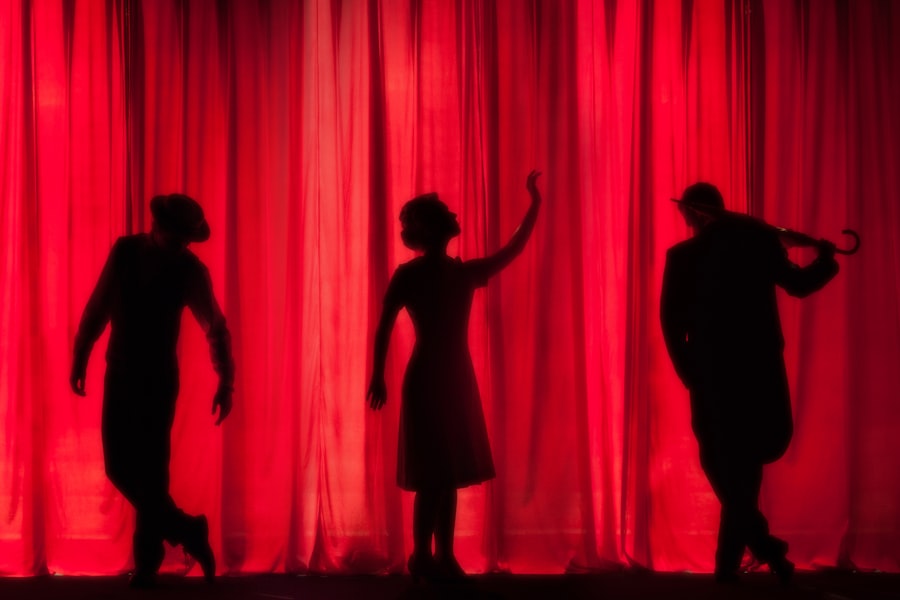The English Renaissance, spanning from the late 15th century to the early 17th century, marked a significant cultural transformation in England, characterized by a resurgence of interest in classical learning and the arts. This period saw the emergence of a vibrant theatrical culture that would lay the groundwork for some of the most celebrated works in English literature. The rise of English Renaissance theatre can be attributed to several factors, including the influence of humanism, the patronage of the monarchy, and the establishment of permanent playhouses.
The humanist movement, which emphasized the study of classical texts and the value of individual experience, inspired playwrights to explore complex themes and character development, moving away from the simplistic morality plays that had dominated earlier periods. The establishment of permanent theatres, such as The Theatre in 1576 and The Globe in 1599, provided a physical space for this burgeoning art form to flourish. These venues allowed for regular performances and attracted diverse audiences, from the nobility to the common folk.
The rise of professional acting companies, such as the Lord Chamberlain’s Men, further contributed to the growth of theatre as a respected profession. This era also witnessed the emergence of playwrights who would become foundational figures in English literature, including Thomas Kyd and Christopher Marlowe. Their innovative approaches to storytelling and character development not only captivated audiences but also set the stage for the eventual rise of William Shakespeare, whose works would come to define English theatre.
Key Takeaways
- English Renaissance Theatre saw a flourishing of dramatic works during the 16th century, with a focus on humanism and the revival of classical texts.
- Thomas Kyd’s influence on Elizabethan Drama can be seen in his popular play “The Spanish Tragedy,” which introduced the revenge tragedy genre and influenced later playwrights.
- Christopher Marlowe’s innovative approach to tragedy in works like “Doctor Faustus” and “Tamburlaine” established him as a pioneer of Elizabethan tragedy.
- The legacy of Kyd and Marlowe can be seen in Shakespeare’s works, with elements of their writing style and themes evident in plays like “Hamlet” and “Othello.”
- Kyd and Marlowe’s impact on the development of English theatre is significant, as their contributions helped shape the dramatic landscape of the time and influenced future playwrights.
- The enduring influence of Kyd and Marlowe on modern theatre can be seen in the continued interest in their works and the lasting impact of their innovative storytelling techniques.
The Influence of Thomas Kyd on Elizabethan Drama
Innovative Storytelling and Character Development
Kyd’s exploration of themes such as vengeance, madness, and the supernatural resonated deeply with audiences and influenced subsequent playwrights. The structure of “The Spanish Tragedy,” with its intricate plot and psychological depth, marked a departure from earlier forms of drama that often relied on straightforward narratives. Kyd’s ability to weave complex characters into a web of moral ambiguity set a new standard for character development in theatre.
Pioneering Dramatic Conventions
Kyd’s influence extended beyond his own works; he played a crucial role in shaping the conventions of Elizabethan drama. His use of soliloquies allowed characters to express their inner thoughts and motivations directly to the audience, creating a more intimate connection between performer and viewer. This technique would later be masterfully employed by Shakespeare in his own plays.
Lasting Legacy in Elizabethan Drama
Additionally, Kyd’s incorporation of elements such as ghostly apparitions and themes of fate and justice laid the groundwork for later tragedies. His exploration of psychological conflict and moral dilemmas paved the way for a more nuanced understanding of human behavior on stage, influencing not only his contemporaries but also generations of playwrights who followed.
Christopher Marlowe: A Pioneer of Elizabethan Tragedy

Christopher Marlowe emerged as one of the most significant figures in Elizabethan drama, often celebrated for his innovative contributions to the genre of tragedy.
Marlowe’s characters are often marked by their ambition and desire for power, reflecting the Renaissance spirit of exploration and individualism.
In “Doctor Faustus,” for instance, Marlowe presents a scholar who makes a pact with the devil in pursuit of knowledge and worldly pleasures, ultimately leading to his tragic downfall. This exploration of hubris and its consequences became a hallmark of Elizabethan tragedy. Marlowe’s mastery of blank verse also set him apart from his contemporaries.
His rhythmic and lyrical use of language elevated the emotional intensity of his plays, allowing for a more profound exploration of themes such as ambition, love, and betrayal. The dramatic monologues found in Marlowe’s works not only reveal the inner turmoil of his characters but also engage the audience on an intellectual level. His ability to blend poetic language with dramatic action created a new standard for theatrical writing that would influence future playwrights, including Shakespeare.
Marlowe’s tragic vision and innovative storytelling techniques established him as a pioneer in shaping the trajectory of English drama during this transformative period.
The Legacy of Kyd and Marlowe in Shakespearean Drama
The legacies of Thomas Kyd and Christopher Marlowe are indelibly woven into the fabric of Shakespearean drama. While Shakespeare is often celebrated for his unique voice and unparalleled contributions to literature, it is essential to recognize how he built upon the foundations laid by his predecessors. Kyd’s influence is particularly evident in Shakespeare’s early works, where themes of revenge and moral ambiguity echo throughout plays like “Hamlet” and “Titus Andronicus.” The intricate plotting and psychological depth found in these tragedies can be traced back to Kyd’s innovations in character development and narrative structure.
Marlowe’s impact on Shakespeare is equally significant. The ambitious protagonists that populate Marlowe’s plays can be seen mirrored in characters like Macbeth and Richard
Shakespeare adopted Marlowe’s use of blank verse while infusing it with his own stylistic flourishes, creating a rich tapestry of language that captivated audiences. Moreover, both playwrights shared an interest in exploring the darker aspects of human nature, delving into themes such as ambition, power struggles, and moral conflict. The interplay between Kyd’s revenge tragedies and Marlowe’s ambitious protagonists provided Shakespeare with a wealth of thematic material that he would refine and expand upon throughout his career.
The Impact of Kyd and Marlowe on the Development of English Theatre

The Emergence of Revenge Tragedy
Kyd’s introduction of revenge tragedy established a popular genre that resonated with audiences seeking intense emotional experiences. This genre’s popularity paved the way for more complex narratives that explored moral dilemmas and psychological conflict, ultimately enriching the theatrical landscape.
Marlowe’s Experimentation with Character Complexity
Marlowe’s bold experimentation with character complexity and poetic language further elevated the standards for dramatic writing. His works encouraged playwrights to delve into deeper philosophical questions about human existence, ambition, and morality.
As English theatre evolved through the late 16th century into the early 17th century, it became increasingly characterized by its exploration of human psychology and moral ambiguity—elements that can be traced back to Kyd’s and Marlowe’s pioneering contributions.
The Enduring Influence of Kyd and Marlowe on Modern Theatre
The influence of Thomas Kyd and Christopher Marlowe extends far beyond their own time; their impact can still be felt in modern theatre today. Contemporary playwrights continue to draw inspiration from their exploration of complex characters grappling with moral dilemmas. Themes such as revenge, ambition, and existential crisis remain relevant in modern storytelling, reflecting timeless aspects of human experience that resonate with audiences across generations.
Works like “Hamlet” or “Doctor Faustus” have been reinterpreted countless times in various forms—film adaptations, modern retellings, or even experimental theatre—demonstrating their enduring relevance. Moreover, Kyd’s and Marlowe’s contributions to dramatic structure have influenced modern theatrical practices. The use of soliloquies to convey inner thoughts remains a powerful tool for character development in contemporary plays.
Their pioneering work in establishing psychological depth has paved the way for modern playwrights to explore themes related to identity, morality, and societal issues with greater nuance. As theatre continues to evolve, it remains rooted in the rich traditions established by these early innovators whose legacies continue to inspire artists today.
For a deeper exploration of the theory of illocutionary forces and performative utterances, check out this article. Understanding the power of language and speech acts can provide valuable insight into the world of theatre in the 1590s, particularly in relation to the works of Kyd and Marlowe. These playwrights left a lasting legacy that continues to influence the way we think about drama and performance today.






















+ There are no comments
Add yours